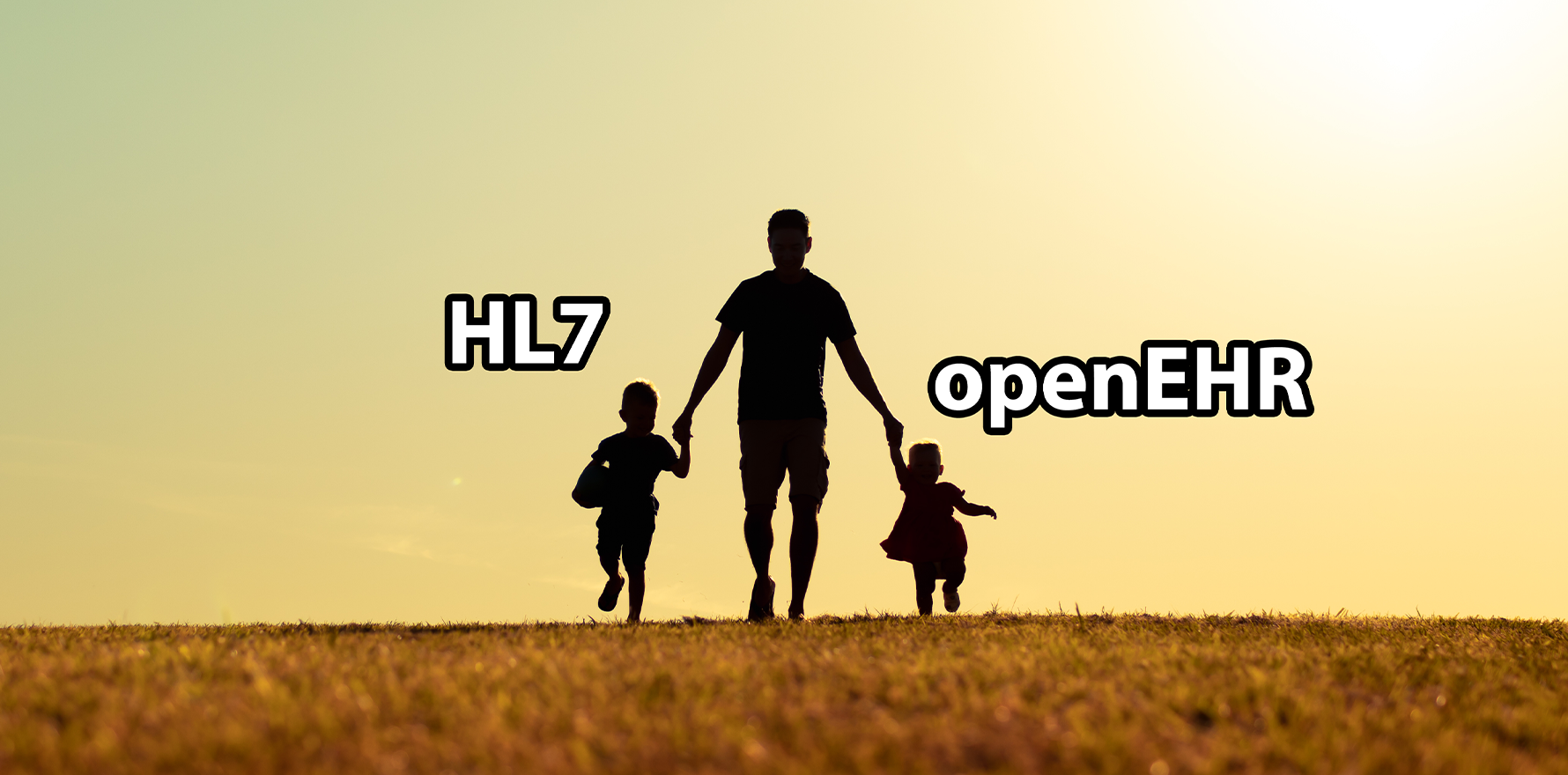
These two approaches are often seen as competitors. But digital health would be safer, more efficient and easier for all if they were used together.
HL7 was designed to solve the technical problem of how to send data from one system to another, while openEHR defines the data to be collected at the clinical work front in a safe and constant way that clinicians understand.
So, what do they do?
HL7 FHIR is the most recent and effective incarnation of international technical standards for messages which share data between systems and different parts of healthcare.
An example is sending the process of sending discharge summaries from the hospital to the GP. The HL7 FHIR specification includes data specifications for individual items of data in a message, as well as the technical structure of the message that makes sure it goes to the right place and can be received and understood.
HL7 the door-to-door delivery service for health data.
openEHR is based upon ISO 13606, an international standard designed for a different part of the healthcare data supply chain – the electronic health record which is the source of data and support of clinical practice.
The openEHR Clinical Knowledge Manager is an open-source web tool that provides a structure and definitions for all the data concepts that might be needed at the point of care. Its scope has extended more recently to cover all data needs including aggregation and administrative data.
The information held in the Clinical Knowledge Manager is reviewed by all healthcare stakeholders, and is open to whoever wants to participate. It is designed particularly so that the doctors, nurses, and all other clinicians can understand it without becoming too technical.
openEHR is the supermarket for your data.
Where HL7 FHIR has hundreds of data elements selected for inclusion in messaging, openEHR has thousands of concepts covering all clinical situations. Users can select the pieces of data they want from the openEHR model based upon their needs.
Though the supermarket stocks everything, you don’t have to take it all, and most people don’t.
Components are also designed so that the data specification can be localised, but retain consistency for national and international integration and analysis.
For example, one doctor might only want the systolic and diastolic values of blood pressure, while a cardiologist may also want to know the device used to measure the blood pressure, or whether the patient had just done exercise.
openEHR is also healthcare’s ‘chart of accounts’. It gives a consistent structure to support plug and play software development and the ability to deliver vendor independence for all systems, while still fitting with the HL7 FHIR model.
Australia has certainly used openEHR and FHIR together for national data, but we need this move to go down to the source data. It is much easier, cheaper and safer if data is consistent before we try and share it.
Some key advantages of using these friends together:
- Less use of maps to transform data from local systems to the messaging requirements, which reduces costs of systems and improves the safety of the data in our message: getting the data off the shelf is faster and easier.
- Reduced work at each local implementation: you can pick the data specifications that are already there; small and large supermarkets all put the chocolate near the checkout. Consistent design can still be flexible and meet goals.
- Faster software development and testing: tools are available to pick and refine the items from the supermarket in preparation for use (these are called templates). The tools produce software code ready for implementation in vendor systems and implementations. This is like having all the veggies prepped and packed before use at home.
- Improved potential for analytics: it is easier to compare a known data structure than it is to try and derive knowledge from a confused and inconsistent data system.
- Plug and play software: Clinicians need systems specific to their workflow and data environment, the openEHR information model supports plug and play software. This allows a broader range of products and easier move to new products.
- Data received can be more easily inserted into receiving systems: from the supermarket bag to the correct place in the fridge.
Some vendors might not like the openEHR approach and have been known to speak against it. This is to be expected, as it reduces their control over their clients, and they have a big existing investment. However, progressive change could allow them time to react.
Healthcare would then reap the benefits of a more vibrant vendor industry and greater control by all with a vested interest in healthcare, especially the clinicians, patients, and data users.
HL7 FHIR and openEHR together support this vision of a more coordinated world; the supermarket of data and the door-to-door delivery system.
Professor Heather Grain ADip HIM, Dip TDD, GDip IS, MHI, FAIDH, FMU, FIAHSI is a senior coder and health informatician at Synapse Medical. She is also the director of course development – digital health at eHealth Education, and is the international director at Global eHealth Collaborative.
Professor Grain will be joining Wild Health as a speaker for our summit on digital health strategy and reform on 18 October in Melbourne. You can see the agenda and buy tickets here, although please note we are selling out fast.

